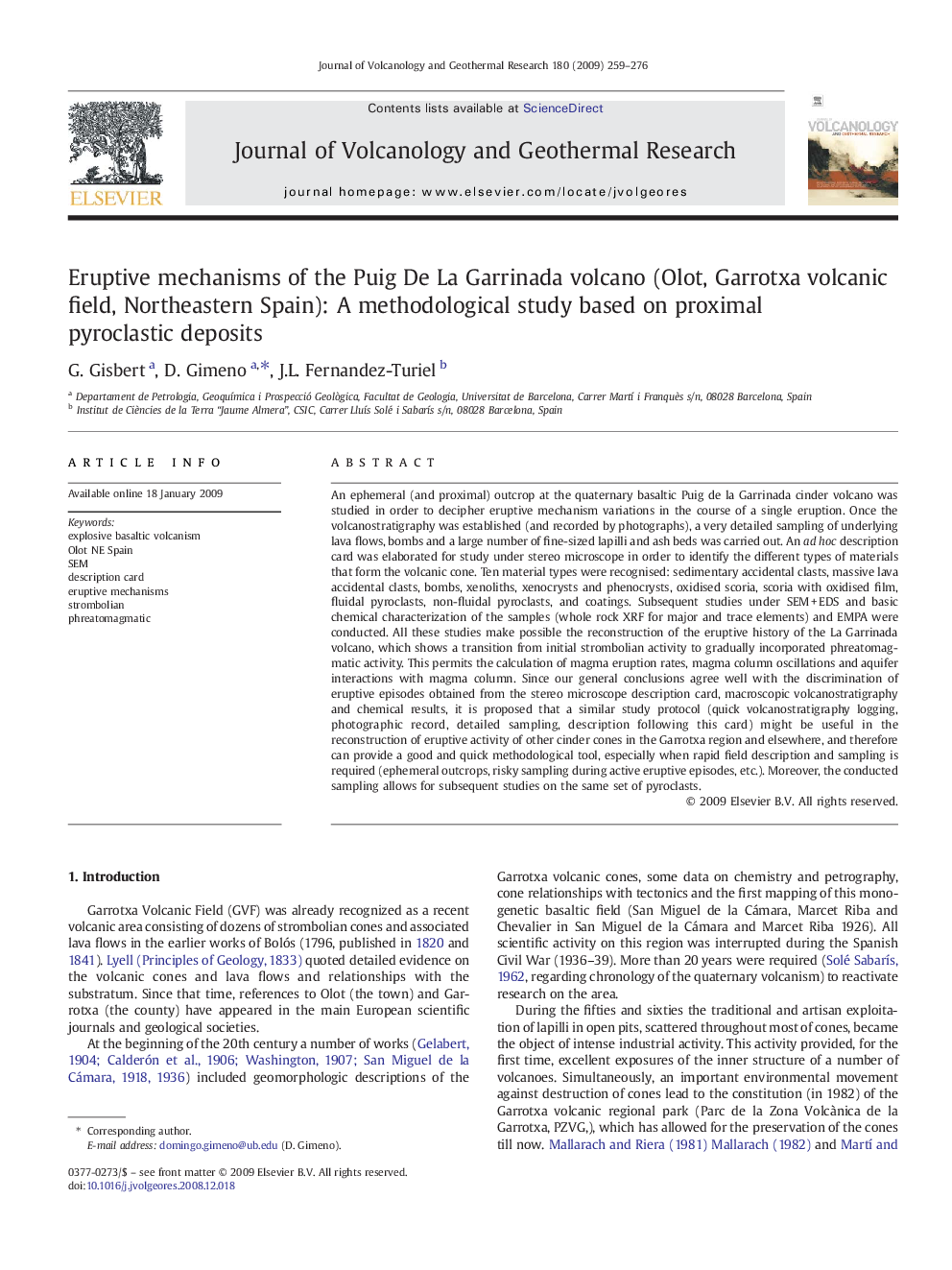| Article ID | Journal | Published Year | Pages | File Type |
|---|---|---|---|---|
| 4714397 | Journal of Volcanology and Geothermal Research | 2009 | 18 Pages |
An ephemeral (and proximal) outcrop at the quaternary basaltic Puig de la Garrinada cinder volcano was studied in order to decipher eruptive mechanism variations in the course of a single eruption. Once the volcanostratigraphy was established (and recorded by photographs), a very detailed sampling of underlying lava flows, bombs and a large number of fine-sized lapilli and ash beds was carried out. An ad hoc description card was elaborated for study under stereo microscope in order to identify the different types of materials that form the volcanic cone. Ten material types were recognised: sedimentary accidental clasts, massive lava accidental clasts, bombs, xenoliths, xenocrysts and phenocrysts, oxidised scoria, scoria with oxidised film, fluidal pyroclasts, non-fluidal pyroclasts, and coatings. Subsequent studies under SEM + EDS and basic chemical characterization of the samples (whole rock XRF for major and trace elements) and EMPA were conducted. All these studies make possible the reconstruction of the eruptive history of the La Garrinada volcano, which shows a transition from initial strombolian activity to gradually incorporated phreatomagmatic activity. This permits the calculation of magma eruption rates, magma column oscillations and aquifer interactions with magma column. Since our general conclusions agree well with the discrimination of eruptive episodes obtained from the stereo microscope description card, macroscopic volcanostratigraphy and chemical results, it is proposed that a similar study protocol (quick volcanostratigraphy logging, photographic record, detailed sampling, description following this card) might be useful in the reconstruction of eruptive activity of other cinder cones in the Garrotxa region and elsewhere, and therefore can provide a good and quick methodological tool, especially when rapid field description and sampling is required (ephemeral outcrops, risky sampling during active eruptive episodes, etc.). Moreover, the conducted sampling allows for subsequent studies on the same set of pyroclasts.
